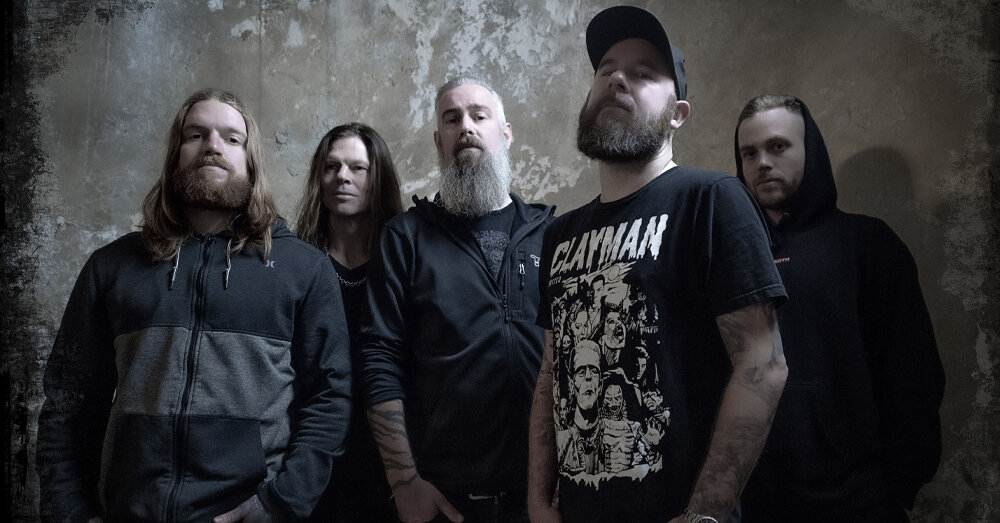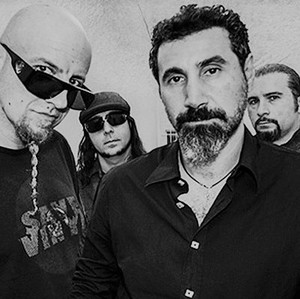Imagine metal music as a vast ocean, with each subgenre akin to a distinct wave crashing against the shore. From the thunderous roar of classic heavy metal to the intricate melodies of progressive metal, there’s a subgenre to suit every listener’s taste and mood.
Let’s start with Heavy Metal, the progenitor that laid the foundation for the genre. Characterized by its powerful guitar riffs, soaring vocals, and themes often revolving around fantasy and rebellion, heavy metal remains a cornerstone of the metal universe. Bands like Black Sabbath and Judas Priest pioneered this genre, leaving an indelible mark on music history.
Venture deeper, and you’ll encounter Thrash Metal, a genre known for its breakneck speed, aggressive rhythms, and politically charged lyrics. Bands such as Metallica and Slayer spearheaded this movement in the 1980s, pushing the boundaries of intensity and technical prowess.
For those who crave complexity and virtuosity, Progressive Metal offers a labyrinth of musical innovation. Bands like Dream Theater and Tool weave intricate melodies and time signatures into their compositions, creating sonic landscapes that challenge the mind and ear alike.
On the darker side, Black Metal emerges as a visceral and often controversial genre. With its raw production, shrieking vocals, and thematic focus on occultism and anti-religious sentiments, bands like Mayhem and Burzum have carved out a niche that thrives on its extreme expression.
If you seek a blend of melody and aggression, Melodic Death Metal strikes a perfect balance. Bands like At the Gates and In Flames infuse catchy melodies with the ferocity of death metal, creating a sound that is both harmonious and devastating.
Unveiling the Mystique: A Comprehensive Guide to Metal Music Subgenres

So, you’ve plunged into the world of metal music and found yourself bewildered by the sheer variety of subgenres out there. From the raw power of thrash metal to the haunting melodies of gothic metal, each subgenre paints a unique sonic landscape worth exploring. Let’s dive deep into this fascinating realm to unravel the intricacies of metal music subgenres.
Thrash Metal: Imagine thunderous drums, lightning-fast guitar riffs, and aggressive vocals that hit you like a punch to the gut. Thrash metal emerged in the early 1980s, known for its intense energy and rebellious spirit. Bands like Metallica and Slayer pioneered this genre, influencing countless others with their raw, unapologetic sound.
Gothic Metal: Picture a blend of gloomy atmospheres, melancholic melodies, and operatic vocals that transport you to a dark, mysterious realm. Gothic metal combines elements of doom metal with dark, introspective lyrics and often incorporates symphonic orchestration. Bands such as Paradise Lost and Type O Negative brought this haunting genre to prominence, captivating listeners with their eerie yet beautiful compositions.
Progressive Metal: Step into a realm where complexity meets creativity. Progressive metal pushes the boundaries of traditional metal music with intricate song structures, virtuosic instrumental performances, and thought-provoking lyrics. Bands like Dream Theater and Tool are renowned for their technical prowess and ability to seamlessly blend genres, creating music that challenges and enthralls listeners.
Death Metal: Brace yourself for guttural vocals, relentless drumming, and frenetic guitar solos that define the essence of death metal. Originating in the mid-1980s, this genre explores themes of mortality, darkness, and brutality with unrelenting intensity. Bands such as Cannibal Corpse and Death are iconic figures in the death metal scene, known for their extreme sound and uncompromising approach to music.
Black Metal: Enter a realm shrouded in darkness and mystique. Black metal is characterized by its high-pitched shrieking vocals, fast tempos, and atmospheric guitar work that evokes a sense of otherworldly dread. Bands like Mayhem and Burzum pioneered this genre, infusing their music with themes of nihilism, paganism, and anti-religion.
Power Metal: Picture soaring vocals, epic melodies, and fantasy-inspired lyrics that transport you on a heroic journey. Power metal embraces themes of mythology, chivalry, and adventure, delivering anthemic choruses and blazing guitar solos that uplift and inspire. Bands such as Blind Guardian and Helloween are celebrated for their larger-than-life sound and ability to create musical landscapes filled with grandeur and passion.
Each metal subgenre offers a unique glimpse into the diverse tapestry of human emotion and creativity. Whether you’re drawn to the raw aggression of thrash metal or the atmospheric allure of gothic metal, exploring these subgenres promises a journey filled with surprises and sonic adventures. So, grab your headphones, crank up the volume, and let the mystique of metal music subgenres captivate your soul.
From Doom to Thrash: Exploring the Diverse Landscape of Metal Genres
Metal music isn’t just a genre; it’s a universe of sonic intensity and diversity that spans across various subgenres, each with its own unique characteristics and fan base. One of the most intriguing aspects of metal is its ability to morph and evolve, giving rise to subgenres that cater to different tastes and emotions.

At the darker end of the spectrum lies Doom metal, known for its slow tempos, ominous lyrics, and heavy guitar riffs that seem to echo from the depths of despair. Doom metal isn’t just about music; it’s about creating an atmosphere of melancholy and introspection, drawing listeners into a world of gloom and introspection.
On the opposite end of the spectrum, we have Thrash metal, a high-energy, aggressive subgenre characterized by its fast tempo, shredding guitar solos, and politically charged lyrics. Thrash emerged in the 1980s as a rebellious response to the mainstream, channeling anger and frustration into a raw, unapologetic sound that resonates with fans of intense music.
Between these two extremes lie countless other subgenres, each with its own distinct sound and following. From the technical virtuosity of Progressive metal to the mythological themes of Viking metal, and from the brutal intensity of Death metal to the atmospheric melodies of Black metal, metal music offers something for everyone.
What makes metal truly fascinating is its ability to defy expectations and push boundaries. It’s a genre where innovation thrives, where artists continuously experiment with new sounds and themes, keeping the music fresh and relevant.

Whether you’re drawn to the haunting melodies of Doom metal or the adrenaline-fueled aggression of Thrash, exploring the diverse landscape of metal genres is a journey that promises excitement, emotion, and above all, a deep appreciation for the power of music to evoke profound feelings within us.
Beyond the Classics: Lesser-Known Metal Subgenres You Should Know
When you think of metal music, classics like thrash, heavy, and black metal likely come to mind first. However, the metal genre is a vast landscape that goes beyond these well-known styles. Exploring lesser-known subgenres can unveil a world of diversity and innovation within metal music.
One intriguing subgenre is djent, known for its complex guitar riffs and polyrhythmic patterns. Originating in the early 2000s, djent emphasizes low-tuned guitars and a precise, technical approach. Bands like Meshuggah and Periphery have pioneered this style, pushing the boundaries of what metal can sound like.
For those drawn to atmospheric and introspective music, post-metal offers a compelling alternative. This subgenre blends elements of progressive metal with ambient music, focusing on texture and mood rather than speed and aggression. Bands such as Isis and Neurosis are celebrated for their expansive soundscapes and emotionally resonant compositions.
Stepping into avant-garde metal introduces listeners to experimental and boundary-pushing music. Avant-garde metal bands often incorporate unconventional instruments, complex song structures, and diverse influences ranging from jazz to classical music. Artists like maudlin of the Well and Kayo Dot defy categorization, creating music that challenges listeners’ expectations and expands the definition of metal.
Each of these subgenres brings something unique to the metal scene, offering listeners new sonic experiences and perspectives. Whether you’re exploring the djent’s technical prowess, diving into post-metal’s atmospheric depths, or embracing avant-garde metal’s experimental spirit, there’s a subgenre waiting to captivate and inspire.
Discovering these lesser-known metal subgenres opens doors to creativity and innovation, highlighting the genre’s ability to evolve and adapt over time. Embrace the diversity of metal music beyond the classics and embark on a journey of sonic exploration unlike any other.
Evolution of Sound: Tracing the Origins and Influences of Metal Subgenres
One of the most intriguing aspects of metal’s evolution is the emergence and development of various subgenres. These subgenres often arise from a blend of musical experimentation, cultural shifts, and individual artistic expression. For example, thrash metal exploded onto the scene in the early 1980s, characterized by its aggressive tempos, complex guitar solos, and socially conscious lyrics. Bands like Metallica and Slayer pushed the boundaries of speed and intensity, influencing countless musicians across the globe.
As metal continued to evolve, new subgenres emerged to cater to diverse tastes and preferences. Doom metal, with its slow, crushing rhythms and themes of despair and darkness, offered a stark contrast to the fast-paced aggression of thrash. Bands such as Black Sabbath and Candlemass pioneered this genre, setting a precedent for bands to come.
In the 1990s and 2000s, metal further diversified with the rise of genres like death metal and black metal. These subgenres often incorporated extreme vocals, unconventional song structures, and lyrical themes ranging from existentialism to the occult. Bands like Death and Mayhem pushed the boundaries of what metal could sound like, gaining devoted followings despite their sometimes controversial subject matter.
Today, metal continues to evolve and adapt, with new subgenres constantly emerging and blending with other musical influences. Progressive metal combines complex rhythms and melodies with elements of classical music and jazz, while metalcore fuses metal with hardcore punk, creating a blend of aggression and melody that appeals to a wide audience.








